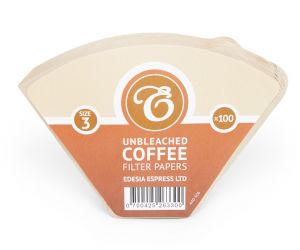 I want to donate
I want to donate
We use cookies to make your experience better. To comply with the new e-Privacy directive, we need to ask for your consent to set the cookies. Learn more
order before 2pm for same day dispatch
Customer Service: +44 (0)330 111 25 23


Coffee machine filter papers - history
On 8th July 1908 the first paper coffee filter was invented by German housewife Melitta Bentz. She wanted to remove the bitter taste caused by boiling loose grounds or using the typical method of linen to brew coffee. She patented her invention and formed a company to sell the coffee filters, hiring her husband and two sons to assist her as the first employees.
Coffee machine filter papers – how are they made? The raw material (pulp) for coffee machine filter papers are coarse long fibres, often from fast growing trees. They are often available in bleached (white) or unbleached (brown) types. Typically, Coffee machine filter papers are made up of filaments approximately 20 micrometres wide, which allow particles through that are less than approximately 10 to 15 micrometres.
Coffee machine filter papers - types. There are several different types of coffee machine filter papers; basket coffee filter papers, coffee filter paper cones and round coffee filter paper circles / discs.
Coffee machine filter papers - sizes. For a filter to be compatible with a coffee machine the filter needs to be the correct shape and size. Cone shaped filter papers are available in the following sizes:
♦ Size 100 ♦ Size 1 ♦ Size 2 or 1x2 ♦ Size 4 or 1x4 ♦ Size 6 or 1x6 ♦ Size 101 ♦ Size 102 or size 3
Coffee machine filter papers - Important factors to consider. Important factors to consider when choosing coffee filter paper are strength, compatibility, efficiency and capacity.